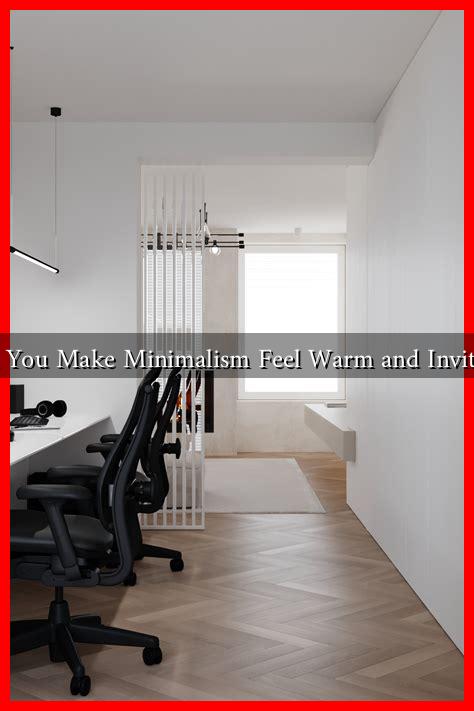-
Table of Contents
Can You Make Minimalism Feel Warm and Inviting?
Minimalism is often associated with stark, cold spaces that prioritize function over comfort. However, the notion that minimalism must be devoid of warmth and personality is a misconception. In fact, with thoughtful design choices and intentional decor, minimalism can be transformed into a warm and inviting environment. This article explores how to achieve a cozy minimalist aesthetic, providing practical tips, examples, and insights.
Understanding Minimalism
Minimalism is a lifestyle and design philosophy that emphasizes simplicity, functionality, and the elimination of excess. It encourages individuals to focus on what truly matters, whether that be in their possessions, living spaces, or daily routines. According to a study by the Statista Research Department, the minimalist lifestyle has gained traction, with 78% of respondents in a survey expressing interest in decluttering their lives.
Creating Warmth in Minimalist Spaces
To make minimalism feel warm and inviting, consider the following strategies:
- Incorporate Natural Materials: Use wood, stone, and textiles to add warmth. For example, a reclaimed wood coffee table can serve as a focal point while providing a sense of comfort.
- Choose a Warm Color Palette: Opt for soft, earthy tones like beige, taupe, or muted greens. These colors can create a soothing atmosphere that feels inviting.
- Add Textures: Layering different textures can enhance the coziness of a minimalist space. Consider using plush rugs, soft throws, and textured cushions to create depth.
- Utilize Soft Lighting: Replace harsh overhead lights with warm, ambient lighting. Table lamps, floor lamps, and string lights can create a welcoming glow.
- Incorporate Personal Touches: Display a few carefully chosen personal items, such as family photos or travel souvenirs, to infuse personality into the space without overwhelming it.
Case Studies: Successful Warm Minimalist Designs
Several designers and homeowners have successfully embraced warm minimalism. Here are a few notable examples:
- Muji’s Minimalist Aesthetic: The Japanese retailer Muji is known for its minimalist products that emphasize simplicity and functionality. Their stores often feature warm wood tones and soft lighting, creating an inviting shopping experience.
- Scandinavian Design: Scandinavian interiors are a prime example of warm minimalism. Designers like Ilse Crawford focus on creating spaces that are both functional and inviting, using natural materials and a neutral color palette.
- Personal Homes: Many individuals have shared their minimalist journeys online, showcasing how they transformed their homes into warm havens. For instance, Instagram accounts dedicated to minimalism often highlight cozy living rooms with soft textiles and warm lighting.
Statistics and Trends in Minimalism
The rise of minimalism is not just a passing trend; it reflects a broader societal shift towards valuing experiences over possessions. According to a survey by the American Psychological Association, 60% of Americans report feeling overwhelmed by their possessions. This has led many to seek out minimalist lifestyles as a way to reduce stress and create more meaningful living spaces.
Conclusion: Embracing Warm Minimalism
In conclusion, minimalism does not have to be synonymous with coldness or sterility. By incorporating natural materials, warm colors, and personal touches, it is entirely possible to create a minimalist space that feels warm and inviting. As more people embrace this lifestyle, the challenge lies in finding the balance between simplicity and comfort. With thoughtful design choices, anyone can transform their home into a cozy minimalist sanctuary that reflects their personality and values.
Ultimately, the goal of minimalism is to enhance our lives by focusing on what truly matters. By making intentional choices in our living spaces, we can create environments that are not only functional but also warm and welcoming.

